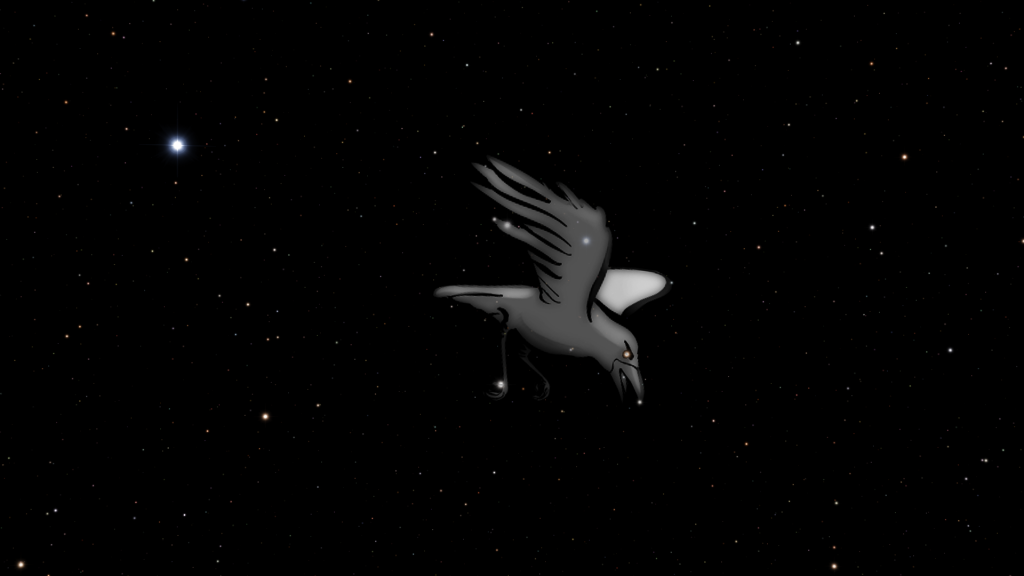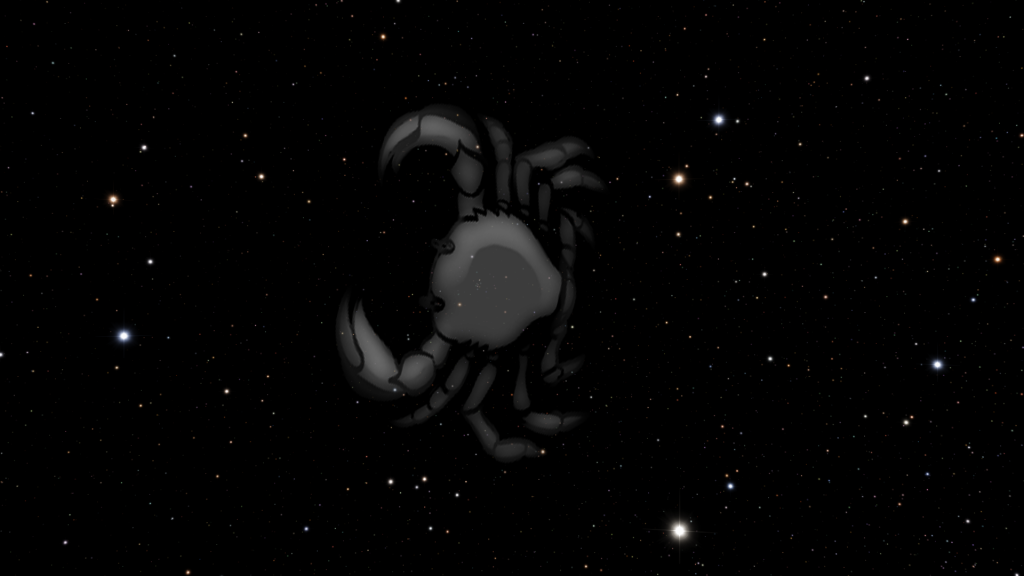Andromeda constellation can be observed in the northern hemisphere. The best period for observation in the middle latitudes is from September to December. The easiest way to find it is to find the Square of Pegasus in the southern part of the sky on an autumn evening. From its upper-left corner, the Alpheratz star, a chain of stars departs to the northeast. Previously, Alpheratz belonged to Pegasus constellation and was called Delta Pegasus (δ Peg), but in 1928 it was finally decided to refer it to Andromeda constellation. The three brightest stars included in the constellation have the second magnitude and are visible to the naked eye – α (Alpheratz), β (Mirach) and γ (Almach). In the southern regions of the middle latitudes in September and October, it turns out to be at the zenith, that is, directly overhead.
How can you see the Andromeda constellation in the sky? In large cities, because of the glare and dust, it is not so well visible, so animations and an image are prepared for you outside the city, in the mountains and if you look at it in space, from orbit.
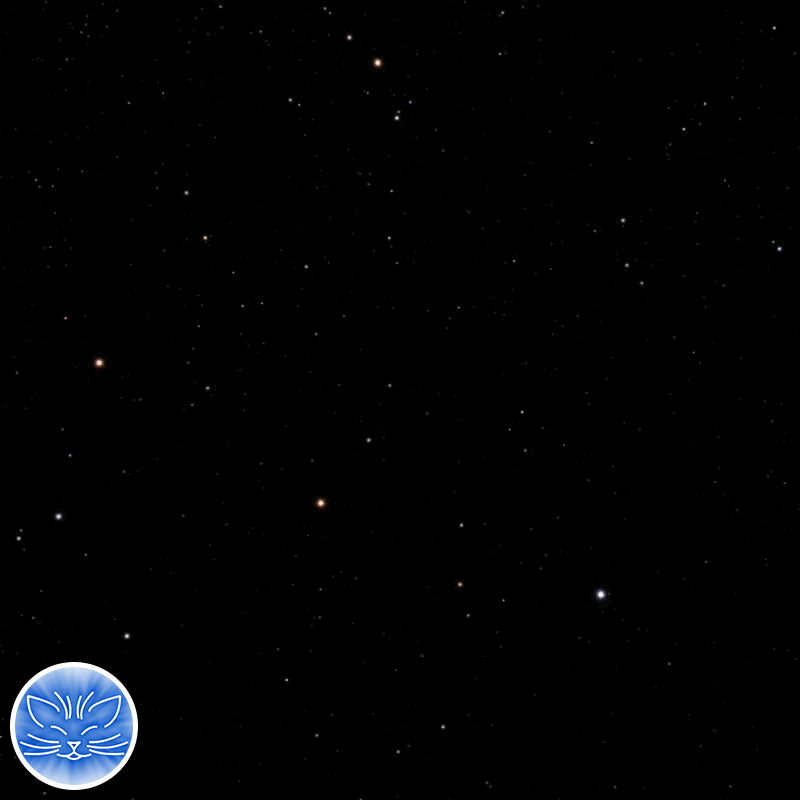
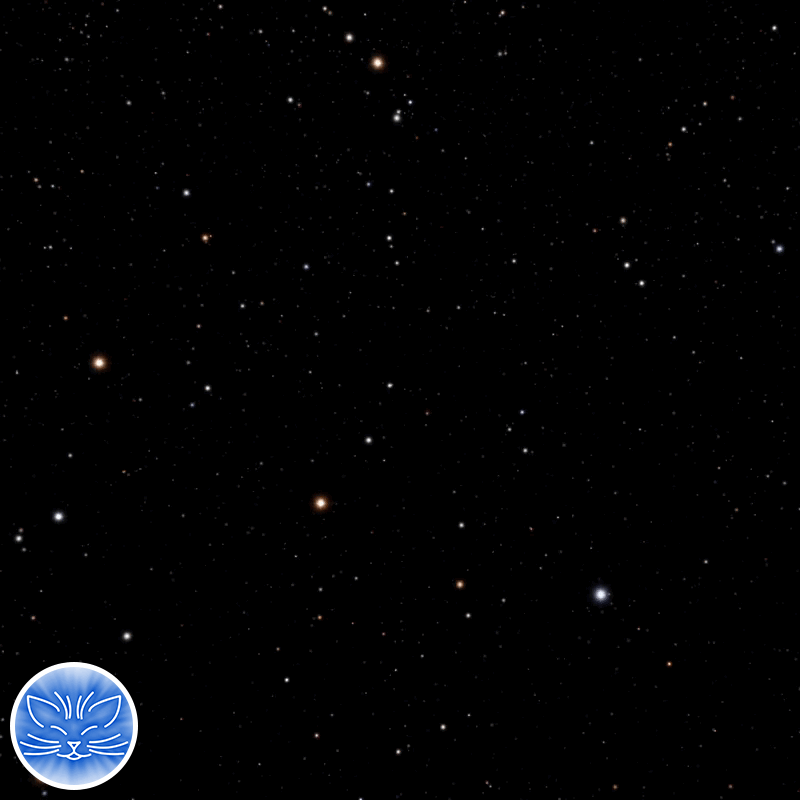
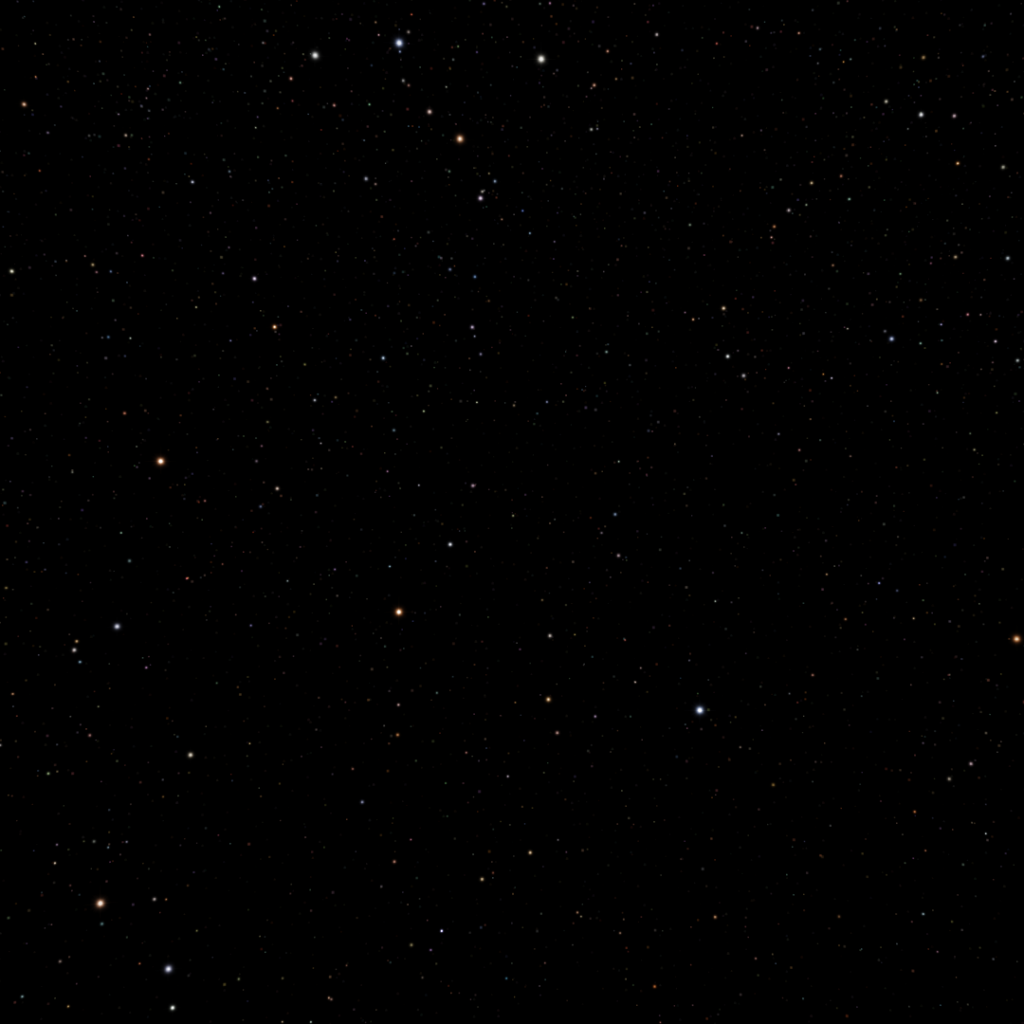
In Andromeda constellation, as mentioned earlier, there are three brightest stars – Alpheratz, Mirach and Almach. All of them have an apparent magnitude from 2.05 to 2.1. The naked eye is unlikely to notice this difference.
Alpheratz is the head of Andromeda, a multiple star consisting of four components and located about 97 light-years away from us. The very name of the star in Arabic means “navel of the horse”. At the time of Ptolemy, it was part of the Pegasus constellation and was considered “A star on the navel, common with the star on the head of Andromeda.” The star is very bright and has an apparent magnitude from 2.1 to 2.06, and an age of about 60 million years. Alpheratz is a bright representative of mercury-manganese stars. In its atmosphere, in addition to hydrogen and helium, mercury, manganese, gallium and europium predominate, and for other substances it is negligible. The reason for this anomaly is the different effects of the star gravity and radiation pressure on different chemical elements.
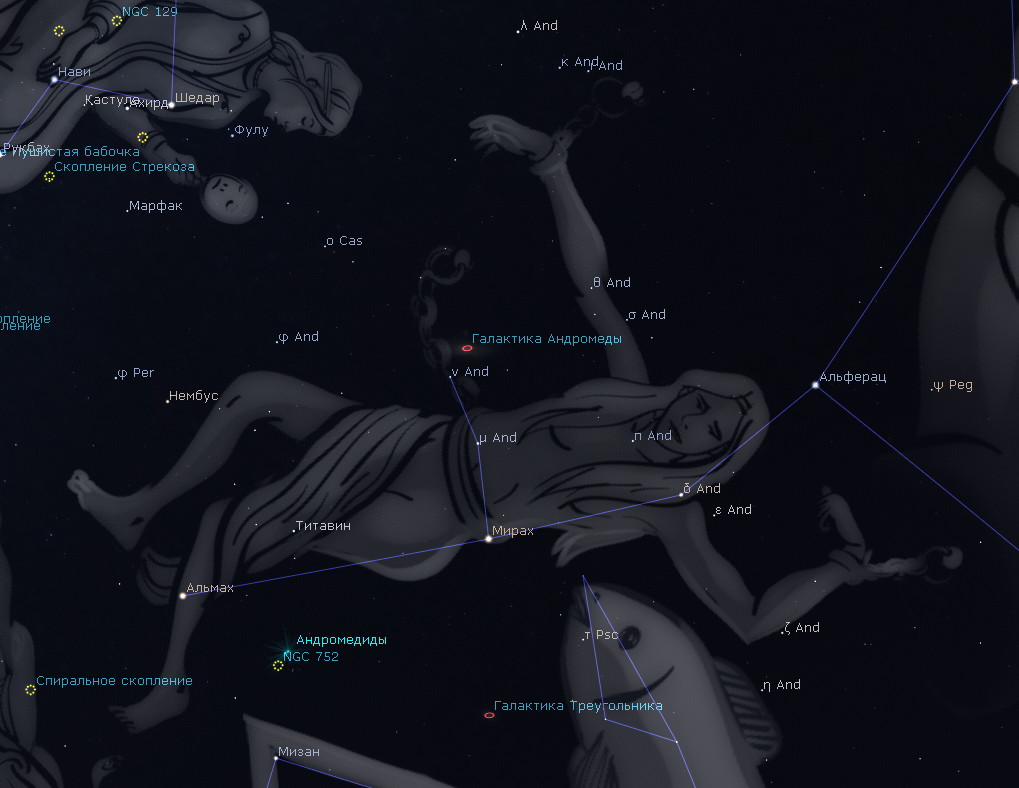
Mirach is the Andromeda belt, a multiple star consisting of ten components and located about 197 light-years away from us. The apparent magnitude is 2.05. Mirach is a very bright star, its luminosity is 1995 solar, the radius is 20 times larger than the Sun, and the mass is 3.5 times larger. Ptolemy describes this star as “the more southerly of the three above the belt.”
Almach is the leg of Andromeda, a multiple star, the third brightest in the constellation and consisting of four components. The apparent magnitude is 2.1, and the radius exceeds the solar one by 80 times. The distance to us is about 350 light years. Ptolemy describes this star as “the star above the left foot”.
Other interesting objects of Andromeda constellation
In addition to many stars, other interesting objects can be observed in this constellation – the Andromeda Galaxy (M 31) and the spiral galaxy (NGC 891), the scattered star cluster (NGC 752), the planetary nebula (NGC 7662) and others.
There are two small stars directly above the Mirach. Next to the second of them is the main attraction of the constellation – the Andromeda Galaxy (M 31). Along with the Orion Nebula, it is of the greatest interest to amateur astronomers around the world. The apparent magnitude is 3.44, so it is visible even to the naked eye. The Arab astronomer Al-Sufi, who lived in the tenth century A.D., describes it as “a small celestial cloud.” In Europe, it was noticed only in the XVII century. A contemporary of Galileo and his colleague in the first telescopic observations of the sky, astronomer Simon Marius, in December 1612, for the first time directed a telescope at the nebula. “Its brightness,” writes Marius, “increases as it approaches the middle. It looks like a lighted candle if you look at it through a transparent horn plate”.
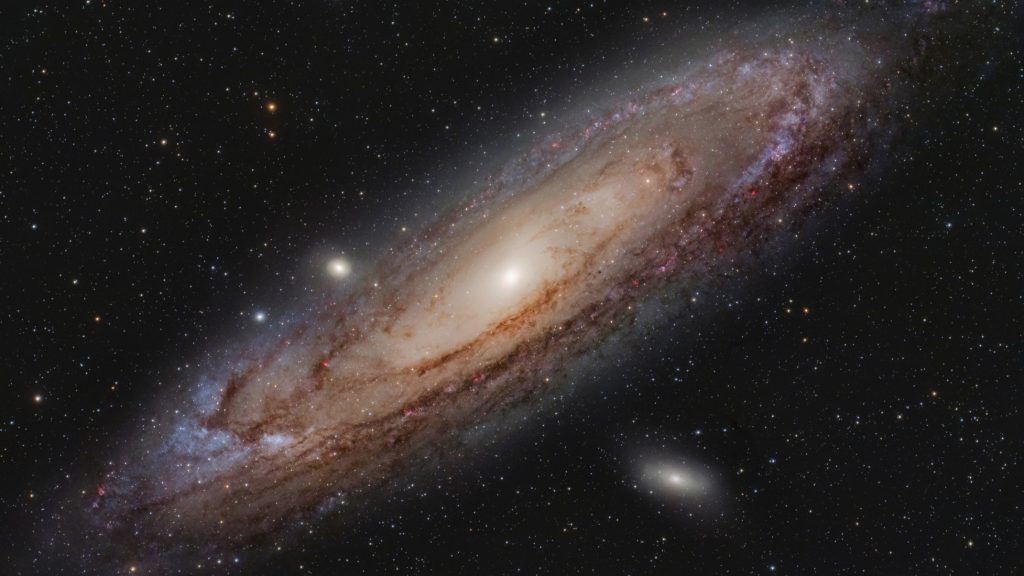
The Andromeda Galaxy is a spiral galaxy with a pronounced spherical subsystem and spiral arms. There are several times more stars in it than in the Milky Way. It is the closest of the large galaxies to us, and the distance between us continues to shrink. According to scientists, the Andromeda Galaxy and the Milky Way, in which we live, will collide in 4 billion years. After that, their merger will take place, which will last about 2 billion years. And, although the probability of collision of individual stars is low due to their low concentration, there is a possibility that the Solar System will be thrown far from the center of the new resulting elliptical galaxy.
The Andromeda Galaxy also has more than 20 satellite galaxies, between which there is a tidal interaction. The most famous of them are the galaxies M 32 and M 110. Presumably, the Triangulum Galaxy also belongs to the number of satellites. About 200 million years ago, the galaxy M 32 passed through the disk of the Andromeda Galaxy, resulting in the deformation of the spiral arms and the appearance of a ring in the galaxy. There is a “bridge” of matter between these two galaxies.

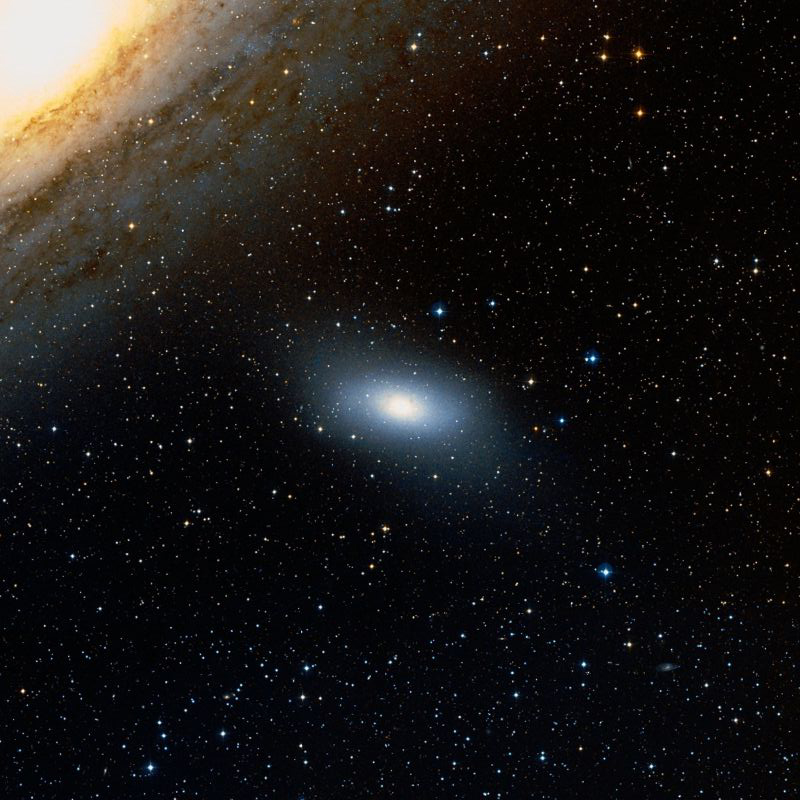
The planetary nebula (NGC 7662) is also called the Blue Snowball Nebula. Its core is one of the hottest known to date. Through the telescope, you can see a bluish disk and variations of shades in the inner part.
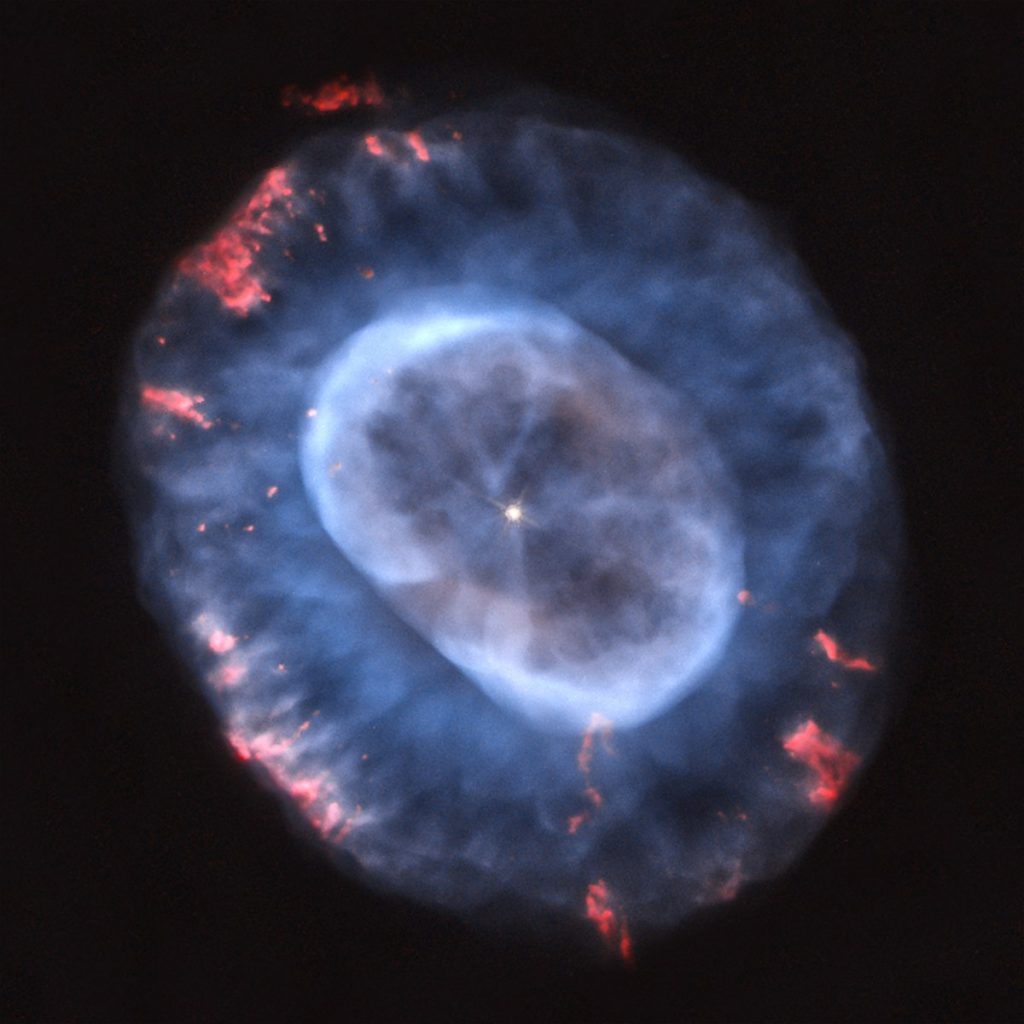
Mythology of Andromeda Constellation
Andromeda constellation has a three-letter abbreviation And. It is recognizable, not very large – the nineteenth largest of all 88 constellations, and the oldest. At the time of Ptolemy, it was included in the catalog of the starry sky (there were 48 constellations in total).
According to Greek legend, Andromeda was the daughter of the Ethiopian king Cepheus and queen Cassiopeia. One day the mother boasted of her daughter’s beauty, saying that she was more beautiful than the Nereids. The angry goddesses wanted to take revenge on Cassiopeia and turned to Poseidon for help, so that he sent the sea monster Cetus to destroy the subjects of Cepheus and thereby take revenge on the insult brought. A local oracle predicted that if Andromeda was sacrificed, the monster’s attacks would stop. The inhabitants of the country forced the king and queen to make this sacrifice. Andromeda was chained to a cliff and she was waiting for her terrible fate.
At this time, Perseus noticed her, returning on Pegasus, and, struck by her beauty, fell in love. He offered a deal to Cepheus – he kills the monster, and the king gives him his daughter to marry. Delighted, Cepheus agreed. Perseus on the winged Pegasus, with the help of the severed head of the Gorgon Medusa, made the Cetus monster petrify. Having accomplished his brave feat, Perseus married Andromeda, and in marriage they had several children. Andromeda became the queen of Mycenae.
All the characters of the legend of Perseus’ rescue of Andromeda – Perseus flying on Pegasus, Andromeda, Cepheus, Cassiopeia and even the monster Cetus were captured in the starry sky with the same names. So that people will remember this incredible story for centuries.
Have you seen this constellation? Have its objects been observed with binoculars or a telescope? What is your favorite constellation? Share your impressions in the comments.


